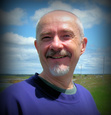Wayne C. Allen's Blog, page 22
June 11, 2018
The Siren’s Song
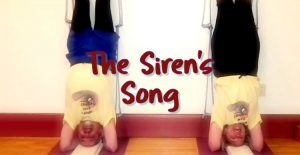
The Siren’s Song — it’s OK to be yourself — to let others know who you are and what you’re up to.

Psst! Hey!
** Want more great writing designed to help YOU to shift your behaviour?
** Want to learn how to find, build or deepen your principal relationship?
** Want to know more about Zen living and being?
First of all, a quote from Richard Bach’s Illusions (pg 46:)
Learning is finding out what you already know.
Doing is demonstrating that you know it.
Teaching is reminding others that they know as well as you.
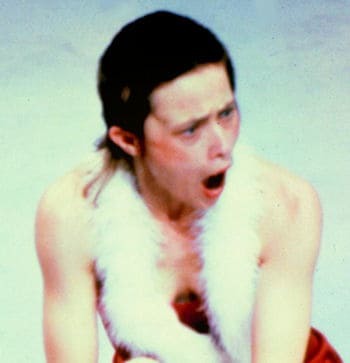 the siren’s song
the siren’s songBack around the turn of the century, we lived in a small town called Elmira. Weekend visitors would often be quite startled when the “air raid” siren went off at noon on Saturday.
Now, coming from the United States, I certainly remember, in the 50’s and 60’s, hearing the sirens being tested. Until we moved to Elmira, I didn’t even know Canadians had sirens.
Here in Samara, Costa Rica, there’s a truck that drives around. Mostly it plugs parties and dances, or you hear about great deals on bananas.
Occasionally, it’s a loud public service announcement about power outages.
Our Spanish is OK, but the announcements are coming through loudspeakers, and they sound like train station or airport announcements. Really hard to hear, let alone understand.
So, Darbella and I run outside, across the condo lawn, and try to get closer to the truck. As we live on a corner, the truck often goes by 4 times, and usually by the 4th (or 10th) time, we’ve figured out the gist of it.
My odd little point here, about sirens and announcements, is that the “people in charge” had pre-determined that their message is important enough to share. And even more, they decided that I (or we all) get to listen to it.
No permission asked or granted. Just a message conveyed.
There’s something really interesting about people expressing their uniqueness — and doing so directly and clearly. I’m impressed enough to write about this because, these days, departing from the crowd and standing out seems to be limited to people like Trump. (Not sure why I thought of him… and the sound of an air raid siren.)
What I’m really suggesting is that we don’t want to cede the stage to blowhards. We need more voices that walk The Pathless Path.
Way too many people seem to “dabble” at life. They express themselves timidly, if at all. They write, they paint, they act… timidly. They protest… timidly.
On the other hand, I think about people like Malala Yousafzai… shot in the head for getting an education… for speaking out… recovering… and instead of hiding, she’s out there… making her point, again and again, catching one’s attention, and certainly getting her point across.
Back in 1982, I had an epiphany.
For the first 31 years of my life, I’d worked off of my power. I was a bit of a bull in a china shop. I thought I could make things happen through force of will… through “loudness.”
One day, I had a good look at myself, didn’t like the game I was choosing, and I shifted. I let go of power plays, and became “simply interested.” I discovered I was no longer interested in change for change’s sake.
I was interested in learning how I, and others, framed their existence. I was interested in who people were, beneath the games.
How, I wondered, do we choose to stay stuck in bad relationships?
Why do we continue to choose to repeat behaviours that don’t work?
Why are we willing to think about our issues, while so few are willing to do the work of living out of their core beliefs?
I began to realize how little I knew.
I decided to implement choice in my life, and evaluate the validity of the choice by the results I got. I saw that this path is a path of strength; it involved probing deeper into myself, then moving more directly “out there” with what I was learning.
My path became one of sharing myself with others. Not to get others to walk my path. Rather, I help others to evaluate their path, to discard what doesn’t work, to choose to actually implement other ways of being. Without excuse.
I wish I had a buck for every person I’ve ever heard say, “I know this stuff and how I want to live my life, but I can’t seem to make myself do it.”
I remind them:
If I am living my life in a balanced and healthy and honest way, shouldn’t I feel content?
On the other hand:
if my life is unrelentingly boring or painful or unclear — if I am never satisfied — doesn’t it make sense that the way I am choosing to live needs to be altered?
On the third hand, I still occasionally act out of my six-year-old self and make messes for myself.
Can I learn that this, too, is a part of my nature?
Can I accept this clumsy little boy within, comfort him, but also clean up his messes?
In other words, can I accept the 6-year-old that is a part of me, but not, at the same time, turn into him?
I’ve been on this path since I chose it in 1982. I am amazed at its twists and turns — how many opportunities for learning AND application I have been given. I understand my path to be mine, and mine alone. I make choices about my life on the basis of this path, and don’t choose to walk another path.
I’ve learned that its impossible to do this work on my own. I’ve needed to find and listen to mentors — fellow “walkers on the Way.”
If you are confused or feeling stuck, find a mentor, a spiritual director, a coach. Surrender your present understandings and explore new ways.
If you are walking on your path, and are content, then just look in my direction and wave. We may not know where we are going, but my, my, my, the companionship is spectacular!
The post The Siren’s Song appeared first on The Pathless Path.
June 4, 2018
Life is Simply Not That Simple
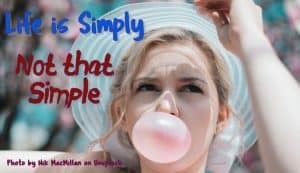
Life is Simply Not That Simple — it seems as if, with practice, or time, life would get simpler. Not. There are layers and layers of complexity.

Psst! Hey!
** Want more great writing designed to help YOU to shift your behaviour?
** Want to learn how to find, build or deepen your principal relationship?
** Want to know more about Zen living and being?
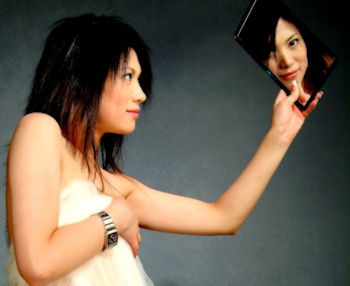 It couldn’t be about me… could it?
It couldn’t be about me… could it?I had quite the conversation with a friend not so long ago. He’s freshly out of a relationship and trying to figure out what happened.
He described a typical conversation — how things had gone before the break-up. He said that practically every conversation would slide into a power struggle over who was “right.”
I mentioned several of the layers contained in any one conversation. His eyes glazed over over.
He said, “I never knew it was so complicated.” Well… obviously.
Darbella and I then had a conversation about complexity. We began by listing the different approaches to life and communication that we use — and then listed ones used by friends. We came up with several layers within any one exchange, and were only stopped by the clock — we both had a play rehearsal to get to.
I’m going to try to be as simple as possible, so bear with me.
Each action we perform, each communication we engage in, has within it several elements. Here is a list of some of them.
· Freedom — I have the ability to do pretty much whatever I want to do.
· Consequences — Each action creates an actual, “non-predictable” result.
· Desired Outcome or Intent — Beneath every action I perform is my hoped-for result.
· Self-responsibility — If I don’t like a result (it doesn’t match my intent) I may choose to respond differently, by changing my behaviour.
Now, I could probably extend this list forever, but let’s start here. First of all, and this will likely be the hard part — all of these levels exist simultaneously, and none takes precedence over the other.
Let me unpack that.
Despite the fact that, at around 15, we all become capable of abstract reasoning — which is really the ability to be situational and to hold multiple points of view at the same time — we were born as black and white thinkers. And black and white thinking is based upon the premise that only one way of thinking or acting (coincidentally, my own way!) is the “right” way.
So, let’s just play with this. Let’s say that you begin a “freedom” project. You may decide to do or say whatever comes into your mind. You’re doing this to move past the parentally imposed, and now self-imposed restrictions of your upbringing. All well and good.
Now, each action has a consequence attached to it — it is impossible to imagine a consequence-less action!
Since we’re using communication as an example, let’s posit that I say “x” to my partner. My partner, upon hearing my words, will do her “thing” and reply with “y.” Thus, the consequence of “x”, in this case, is “y.”
If I am a black and white thinker who is experimenting with freedom, I will not care what “y” looks like. My freedom, as my only criteria, completely eliminates sensitivity to the result. This would be so even if my partner burst into tears, then got extremely angry, then left the room.
From my black and white position of freedom, I’d say, “I have the right to say whatever I want, however I want to say it. She needs to get over herself.”
This is actually the case. But not if my goal or intent is to communicate well. It’s only a perfect response if what I’m trying for is to live my life by myself, with no friends and no relationships.
Let’s add in one more layer.
Remember my article from 2 weeks ago, on Non-Attachment?
Surely, that means not attaching myself to my partner’s reaction, right?
Nope.
Non-attachment is choosing not to attach a self-definition to the results of an action. Non-attachment is either: “That got me closer to my intent,” or, “That got me further from my intent.”
As opposed to what we usually do — telling ourselves “Boy, am I terrific!” when we get “positive” feedback, or say “Man, am I stupid,” when we judge that things have gone wrong.
To recap:
The dilemma: unlimited freedom, as our only perspective, is only possible if I choose not to be in real, healthy relationship with others. I’m going to say or do whatever occurs to me, and will not care about, nor even hear or see the reaction of others.
Here’s the next piece.
So, let’s say I want to experiment with freedom and want to engage in healthy relating. In order to do this, I need to form an intent — in this case, to be in a deep and meaningful relationship.
Once I have created an intent, I can then observe the effect of the choices I make in relation to the intent.
To go back to “x” and “y.” This time, I do or say “x.” I notice that my partner bursts into tears, then gets extremely angry, then leaves the room. At this point, I have a choice.
I can get all righteous and say, as above, “This is her problem.” (And that would be so. My partner has chosen to have the reaction she had, out of all possible reactions.)
However, and it’s a big however, I can hold in my consciousness my intent — to deepen my relationship with my partner. I look at the response my action elicited, and I ask myself a simple question: “Did my words (or actions) get me closer to or farther from my intent to deepen my relationship?”
As soon as I ask this question, I am reminded that my ultimate freedom is the freedom to choose another way.
Clearly, if my actions or words move me deeper into relationship, I will choose to repeat that behaviour. On the other hand, as in our illustration, if my words or actions result in a disconnection between me and my partner (and now, in addition to whatever “x” was, we’ll have to deal with her hurt, her anger and her walking out of the room) — I might just decide to make a better choice.
Remember, a black and white thinker will retreat into self-righteousness. “Phooey on this crap! I’ll be damned if I’ll change my behaviour just to make her happy! Besides, I can’t make her happy. She’s choosing this! Let her sit there in her misery! And the next time, I’ll do it all over again!”
Ouch.
Or, “Hmm. Interesting. I’ll apologise for violating my intention, then experiment with saying or doing this differently next time. I can’t control her choice of reactions, but I certainly can choose what I do.”
And then, without delay, you apologise and start again.
Let’s put it all together.
I choose, in my freedom, to declare a flexible intent .
In my freedom, I act.
I then pause, and in non-attached quietude, I reflect on the results of my action.
What were the consequences of my action?
Did I move closer to or farther from my intent?
From a position of self-responsibility (as opposed to self-righteousness,) what will I freely chose to do next?
Each life transaction contains, (every time!), all of these elements (and many others!). Each action has a consequence, both for the actor and for the recipient.
Each response comes from either self-responsibility, or from self-righteousness, or from a myriad of other possibilities.
Every exchange with those you care about is best presented from a place of loving intent.
It simply isn’t simple. But spending your life alone (even within a relationship!) is not a palatable choice.
So, choose to have your freedom in dialogue with your intent. Every time.
The post Life is Simply Not That Simple appeared first on The Pathless Path.
May 28, 2018
Swimming with Delusion
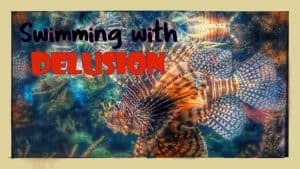
Swimming with Delusion — there is no escaping our delusions. It’s the water we swim in. But hey, it would be nice to notice…

Psst! Hey!
** Want more great writing designed to help YOU to shift your behaviour?
** Want to learn how to find, build or deepen your principal relationship?
** Want to know more about Zen living and being?
I happened upon a great article in Lion’s Roar, a Buddhist online magazine.
The article is called, “What If Our Delusions Aren’t a Barrier to Enlightenment?” by Zenju Earthlyn Manuel
Here’s a quote to get you on board.
But what if our deluded minds aren’t a barrier to enlightenment at all? What if they are the very path to it? Several years ago, I stumbled upon the term shinzo, or “ever-intimate,” used by Dogen Zenji. Perhaps due to the lack of intimacy I so often felt in my personal life, I felt an immediate connection with the phrase in my own practice. So, I made an effort to learn more about Dogen’s teachings on shinzo. In his book Dogen on Meditation and Thinking: A Reflection on His View of Zen, Buddhist scholar Hee-Jin Kim wrote that Dogen used the term to address the intimate and dynamic relationship between enlightenment and delusion:
The ultimate paradox of Zen liberation is said to lie in the fact that one attains enlightenment only in and through delusion itself, never apart from it… Enlightenment consists not so much in replacing as in dealing with or “negotiating” delusion.
In essence, Dogen was saying that mind—or body-mind, as he referred to it—must be brought into the inherent intimacy between what is illuminated in our lives and what is darkened, that we must fully participate in the dance of these two, continually twirling together and trading places.
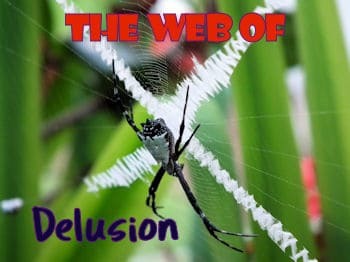
Believe it or not, what occurred to me was, “FISH!
Well, actually, fish and water. As in, “A fish is not aware of the water it swims in.” Much as we are not (normally) aware of the air we breathe.
In a very real and important sense, Delusion is “the water we swim in.”
When you think about the present political climate of the world, and specifically in Trump’s America, you’ll see my point. No matter which “side” you’re on, you likely can’t figure out how “the other side” can be so… stupid… so… deluded.
What seems so obvious to you is opaque to “the other.” I don’t think it’s a stretch to say that you are, and “they” are — swimming in delusion.
The Zen and Buddhist position is that this is how it is. What we can train ourselves to do, though, is notice what we are swimming in.
The key to all of this is awareness. In other words, to swim with a flashlight in one hand and a notebook in the other. That I am deluded is a given. That I am unaware that I am deluded is plain stupidness.
But common. And easy to fall into. Because our egos love being stuck in their own stuff. And you know you’re stuck when you either think or say, “But! But! That’s just the way I am!”
I the article I mentioned, the writer mentions sitting with one of his students as she remembered a past trauma. Her bodily reaction was to “do stuff” to distract herself.
The writer suggested that the woman breathe.
But of course! Conscious breathing, like conscious meditation, allows us to begin to see and grasp the games we’re playing with ourselves. We become aware of the tightnesses and physical “ticks” we kick into gear, in order to stay lost and unaware.
A couple of days ago something happened to our relatively new cook top. I’d just spilled water all over the cook top, and was grumbling loudly at Dar for leaving a pan of water there. There’s a “Lock” on cook top, and I couldn’t get it to unlock.
I could feel my anger rising, and an angry Wayne is not a pretty sight. I tapped buttons — nothing. I got angrier. I walked over to the breaker box. One by one I clicked the breakers off, then on. Each time, Dar said, “Nope.”
I could feel myself losing myself and my ego was building a blame story… a disaster story… an “it’s broken” story.
So, I breathed.
Not really effectively, not really well… but enough to notice the drama I was swimming in. I could see my delusion… my anger and my stories were keeping me stuck… AND! Because I was lost in delusion, the cook top wasn’t getting fixed.
I sighed. Then, still stomping a bit, I want over to the little building where the electric meter is, and turned off the electricity to the condo. Then, back on.
The cook top reset itself, and I heated dinner.
I still grumbled a bit… an angry Wayne is not a pretty sight. But a moment or two later, I was over myself, and the thing I’d been swimming in was as obvious as hell.
The game I was playing with myself was only possible if I chose to stay unaware of my game… my delusion. I stopped the game when I noticed the delusion I was swimming in.
This is the human condition… to miss our delusions… until we choose to stop making excuses for ourselves.
And to simply notice. To become aware. To see.
And then to remember that this is the game we will play until we die. Enlightenment comes moment by moment, not for all time. You are awake… when you choose to be.
So, choose!
The post Swimming with Delusion appeared first on The Pathless Path.
May 21, 2018
Presence is Non-Attachment
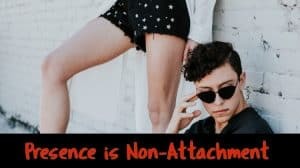
Presence is Non-Attachment — non-attachment is a hard concept for Westerners, who are taught to look outside for meaning. But true presence is about “simply being there.”

Psst! Hey!
** Want more great writing designed to help YOU to shift your behaviour?
** Want to learn how to find, build or deepen your principal relationship?
** Want to know more about Zen living and being?
Let’s talk today about attachments, living our vocation and letting go. Might as well address small, minor topics… that was a joke.
I’ve often said that “non-attachment” is about remembering, “it’s not about me, it’s not personal.” Here’s a note I received years ago, on that very topic:
…On Saturday when I went skiing into a new site, I lost myself. Two hours later I’m far away from my destination, whoops, where I left the car. I have a long ways to go. Another metaphor. I’m getting my knickers in a knot about being ‘so far away’, ‘losing myself’ and blaming me for such a poor sense of direction as I trudge along.
Suddenly the Wayne voice pops up: ‘…or you can breathe,’ which I did. Immediately I was noticing my landscape, giving thanks for the privilege of experiencing snow, woods, old stone buildings, and the light effects of an overcast but calm day.
The car was still there. I had to bribe the dog to get into it. Did she want to spend more time, I wonder? Here I had been thinking she was tired, exhausted, and thirsty. Wrong again. She was happy being in the moment. I need to remember that dog quality.
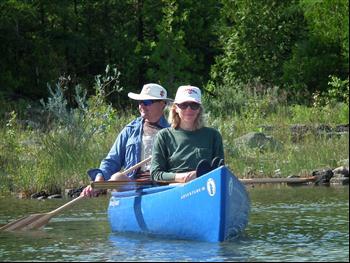 Life is all about the paddle…
Life is all about the paddle…Far from being lost… or dying in the woods… the writer was actually non-present and very attached.
Her attachment was to an old belief that she often “lost herself.” To get there, she went into her head and thought about “all the times I’ve been lost.”
So, you’re skiing along, miles from home, off in la-la land, enjoying the rhythm of the skis. You’re so “into” the rhythm, the feelings in your body, that you really aren’t “present” in the world.
Suddenly, you come back into “the world” (I hope you realize I keep putting things in quotes to remind you that “the world” is a personal construct, not a fixed reality — right? Whoops. Diversion.)
So, my friend opened her eyes, and then went back into her head, there to concoct a story. Poof. She was “lost and far from her car.” That became her version of “the world.”
Now, imagine another skier passing her, who has skied this trail 20 times. As she stops at the same place as my friend, what “world” does this person see?)
Anyway… you pop back into “the world” and realize that you have not been paying attention, and you are “lost.” The joy of the rhythm — the pleasurable bodily sensation you were giving your sole attention to — has seemingly led to a scary place.
I’m not saying that my friend should have ignored her feelings — I’m saying that by only feeling her feelings, she skied off into oblivion.
I am saying that skiing consciously, in a state of “presence,” will likely be more helpful.
My friend woke up “lost.” Her past experience (and therefore her predilection) was to give herself grief over any perceived failure. In that moment, her focus shifted from the good feelings in her body to her ego, whose only job is to be critical.
Now, she’s really “lost.” Which is actually how people do get lost, out in the bush or anywhere else.
Panic, futility and fear sets in. “I’m dead, I’m toast, woe is me!” This is attachment.
The danger to attachment is that you only see yourself. You see and feel the panic, the lost feeling, and you freeze.
Because you are choosing not to notice the bigger picture (and this is also what got you into this mess in the first place!) you are unable to move. All that’s left is to sit down, tell yourself what a fool you are, make yourself depressed, and die in the snow.
Or… as my friend did, you could have those feelings of “lost and alone” for a moment, then give yourself a shake and have a look around.
Suddenly, you are back in the wider universe again, where life is moving along, the sun is shining, the snow is falling, and you see a path back home.
There is paradox upon paradox here.
My skiing friend had several choices.
She could have sat down and died.
She could have skied on in a panic, exhausted herself and died.
She could have skied desperately to her car (not, of course, knowing where her car was — most people live their lives like this — rushing around blindly, confusing activity with purposeful action.) Or,
she could have skied along, paying attention to the day, the trail, the terrain, while simply being in the moment while heading back to her car. (In other words, to stay present while heading in a selected direction, without attaching to an outcome.)
I know. That last one seems so counter-intuitive. How will this work?
The alternative — attachment to a specific outcome — is dangerous. As soon as you set your eyes on any one thing (or understanding, or self-definition) you lose the ability to respond to anything else that is happening around you.
Learning to let go of attachment is best achieved by remembering not to personalize what is going on around us — it is not happening “to” us. It simply “is.”
The Real Goal
You have a big head that wants to understand Buddha’s teaching, so we have to talk about it. Then little by little you build up a kind of theoretical buddhology in your head. Maybe you think nirvana is the goal, something you can reach by obeying Buddha’s teaching. But if you attach to such a goal, you are stuck in your concept of nirvana and you cannot move an inch. You cannot find a peaceful life that way because the peaceful life that you are seeking is not a concept. So your real goal is to be free from your goal. Whether you attain enlightenment or not doesn’t matter. What matters is that you keep going. That’s all we can do.
Excerpted from:
The Light That Shines through Infinity
by Dainin Katagiri,
page 51
Again, difficult. So, let’s posit that I have an illness. If I go to “Why is this happening to me?” I divert my energy into my head, and spend hours, days, weeks trying to figure out “why?” Now, even if there was a “why,” how is this exercise contributing to my getting well?
On the other hand, I might say, “Hmm. Interesting. I am experiencing this illness. What resources are available to deal with this?” If I do this, I am much more likely to move past the illness. This latter approach is non-attached and in the moment.
In reality, nothing is happening to us. Life is going on, and we are stepping into it, moment by moment. Rain is. Rain doesn’t “happen to us,” even on our wedding day! We step in, we step out. Thus it is with everything in life.
When seemingly lost, open your eyes and see the beauty around you. Ski in a logical direction, gracefully and smoothly. Breathe. Watch life continue to unfold. Act, by detaching. You will get home. One way or another.
The post Presence is Non-Attachment appeared first on The Pathless Path.
May 14, 2018
Changing Your View of Change
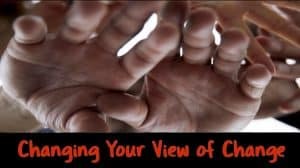
Changing Your View of Change — on learning to go with the flow of life

Psst! Hey!
** Want more great writing designed to help YOU to shift your behaviour?
** Want to learn how to find, build or deepen your principal relationship?
** Want to know more about Zen living and being?
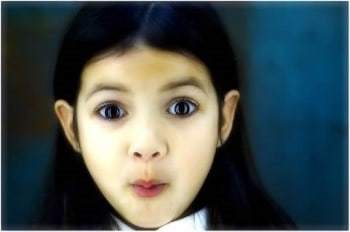
If ever there was a prescription for a fulfilled and contented life, it is understanding this:
the lessons life provides are not over until you are.
One of the curses of modern life is the incessant busyness of it. People seem driven, and complain that there “Simply isn’t enough time.” There’s “Too much happening.”
Which leads to the question — what is the nature of life?
The root nature of life is change. Everything, always, is in a state of flux. Every cell in our body is being replaced, right now, in this moment. There is only flow — there is no beginning, no end, to anything, until we curl up our toes. And even then, the jury’s out on “what’s next.”
Many folk have not learned the gift of contentment within this flow of change; thus the pull toward trying to get things to stop, to stand still, to be manageable.
Part of the acceptance piece is learning to thrive within change… yet, it’s so hard to admit that I and everything around me is changing. I can’t depend on anything staying the same.
Look, for example, at relationships.
If you really open your eyes and have a look, all the relationships you are in are “fluxing” all the time. Darlene and I never say to each other, “How are you today?” Rather, we say, “Who are you today?” We’re not kidding.
There is only one way to accept this premise — that everything is always changing
You have to decide to become curious.
I have a great old story for you — from my counselling days. A client arrived at my home office, and happened to end up talking with both Darbella and me — this as he doffed his coat.
In session, he presented a long list of what his wife “always” did — as if his wife was fixed in stone.
I gave him my “I don’t know a thing about Darlene” speech — it’s part of the “Who are you today?” concept. I said, “You and I talked to Dar before our session started; but I’d be a fool to bet that Darbella will be exactly the same person when we come out.”
At that moment, the house phone rang.
I said, “It’s like that phone call. Right now, Dar could be hearing that a crazed killer has just wiped out her family. (I know… I’m weird…) But I won’t know for sure until I ask.”
I was making an exaggerated example for dramatic effect. Anything… literally anything could have happened in Dar’s part of the house, and in Dar’s head, in an hour.
In other words, time had passed, and she had changed.
Well, anyway, after the client left, I went into the kitchen. Dar was bent over the kitchen counter, holding her head… and I immediately interpreted (otherwise known as guessing — and doubt coloured by my “crazed killer” comment) that she looked sad and depressed.
I said, “Oh God! What happened?”
She looked up quizzically, then replied, “What? I’m reading a recipe.”
I know. Long story, little point.
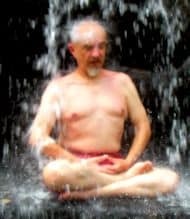
I’m flitting around the idea that to achieve contentment we have to learn to flow with change. And to accept change requires curiosity and flexibility.
In other words, nothing intrinsically means anything. Nothing is as it was a moment ago. Indeed, all there is, is this endless, eternal moment going by — the eternal now.
For more on this, read my book, This Endless Moment 2nd. edition
Of course, we are required to play the game that the project we are working on, or the person we are talking to, is the same project, the same person as yesterday. But if you really wrap your head around the concept of flux and flow, you’ll realize that, as the Native People say, you can never enter the river at the same place.
Each week, when I approach The Pathless Path, I come at it as a changed person. In fact, I even change as I’m writing.
It’s quite hot here in Costa Rica, so Darbella and are are going to pull up for a quick dip in the pool.
Right now, I’m on a roll, writing. Where and who will I be when I come back?
I can guarantee I’ll be different. I’ll likely be cooler. We’ll likely meet people from the condo complex, and for sure we will see things. And I’ll be thinking about The Pathless Path as I float.
How could my approach, given all of those variables, not be different when I return?
Same with me and Dar… or me and other people I am in relationship with. Who will they be, next time we talk, we meet? I don’t know. Are they predictable? Hmm. For sure they will have shifted. No surprise there.
This week, explore your relationship to the idea… the reality of change. How stuck are you? What do you believe you can’t change, and why? How are you giving your life over to repeating behaviours and understandings?
You’re not actually stuck at all, you’re changing all the time. Denying this reality doesn’t change the change.
It’s easy to rail against change and, at the same time, to pretend to be stuck. But being stuck is nothing more than your choice to repeat what isn’t working.
And here’s the joke — even when you’re stuck, you’re changing! You’re making the situation worse by repeating what doesn’t work, and in that way lowering the bar of what you expect to happen.
If you want your life to be different, recognize this: you can’t stop change, but you can obsess enough to make yourself miserable. Instead, look at your life, see what you are doing to yourself, and simply ease into structured, intelligent, soulful, joyous change.
In this is contentment, full life, health.
The post Changing Your View of Change appeared first on The Pathless Path.
May 7, 2018
Passionate Engagement
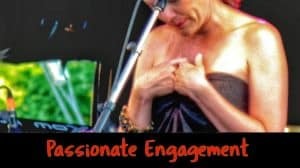
This is post 5 of 5 in the series “Intimacy as a Way Inside”
Passionate Engagement — we engage as only we can, by focussing on ourselves, seeing who we are, and sharing fully

Psst! Hey!
** Want more great writing designed to help YOU to shift your behaviour?
** Want to learn how to find, build or deepen your principal relationship?
** Want to know more about Zen living and being?
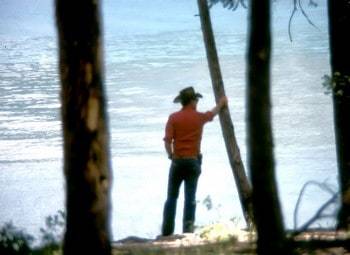 Passionate Engagement starts with self-knowing
Passionate Engagement starts with self-knowing
I impress myself with what people are able to accomplish, once they give themselves permission to drop their need to plan, to order and to understand. Stunning insights, waves of feeling; all of this happens within the framework of “making contact.”
It’s never about the context –
it’s always about the contact.
It’s oh so easy to look outside of ourselves for what’s going on, to default to old behaviours, to abrogate responsibility for where we are and what we are choosing.
But I don’t buy this external focus, because, so long I am alive and breathing, I am choosing what I am doing.
In the book The Mystery of Human Relationship — Alchemy and the Transformation of the Self, Salant writes that while alchemists were ostensibly “about” transforming one substance into another, the alchemists were also and fundamentally transforming themselves.
We need passion in order to transform ourselves — and the vehicle (or the laboratory) for that transformation is relating .
In other words, our transformation arises in the action of relating, not in the existence of the relationship, per se. As one relates, one’s self is transformed.
This form of passion is both deep and profound. The direction of this sort of relating is the direct opposite of the safety of mere communication — away from head trips, explanations, wonderings and musings about “why” and “what’s right,” to the sharing of the heights and depths of ourselves — the revealing of our pain, our secrets — even our outright strangeness.
In studying myself (seemingly forever…) I’ve discovered a few things.
For example, when Darbella is hurting I have a burning desire to jump in and make it all better. This leaping in, at its root, is not about Dar — it’s about me trying to “fix” my discomfort with her pain. To simply sit with her as she explores her pain, or even more difficult, to sit with her as she simply chooses to be in her pain, seems impossible, to that part of me that wants to “fix.”
Until I take a breath.
In that moment of inner focus, I see my fear of change, my fear of pain. If I choose to stay there, I can see how my fear causes me to want to turn my attention outward — to try to “fix” the universe so I can be happy.
As I catch myself doing this, I can then stop myself — I can choose differently. With effort, I can become curious about Darbella and her experiences, while accepting responsibility solely for my own experiences.
Often, relationships break because of fear of intimacy, while the parties involved loudly proclaim that intimacy is what they are seeking.
True intimacy, however, is the ownership of the process of the opening up of the self for examination and sharing. We must reveal all of it, and especially the parts we wish to hide, or wish we could get rid of.
To quote Ben Wong and Jock McKeen, in The New Manual for Life,
“In our view, change of the basic personality is not possible. Often, seeking for change is a way of anesthetizing the anxiety of nonbeing that accompanies life. To accept one’s deep structures and tendencies often involves embracing this anxiety. To devote oneself to knowing one’s basic patterns (and accepting the accompanying anxiety) rather than trying to eradicate them, will allow for more self-acceptance, more self-responsibility, a greater inner strength and heightened self esteem.…The more thoroughly people know their patterns and tendencies, the more varied, creative and spontaneous they can be.”
This knowing of the self, and accepting of the self, includes letting others in on what’s going on.
Often, we want to hide the dark stuff we consider to be too black for public consumption. Yet it is only in the dialog, the sharing of self, all of the self, that choice becomes available. It is only after I admit to my games and foibles that I can access the thought, the intent, of doing things in a different way.
Relating is difficult. It requires time, focus and a full commitment to self-revelation. Yet, when the going gets rough, relating requires nothing more than staying in direct contact and continuing to express curiosity.
Life was never meant to be easy. We are complex creatures, driven by motives and passions that are as old as we are — and which link to generations that came before us. We bring ourselves, all of us, into relationship.
The height of silly, then, would be to pretend we can hide the parts of ourselves that we judge to be unacceptable. The depth of wisdom is to reveal all, and be witnessed fully, with no cop outs, no pleas of “I don’t know what I’m doing” — no excuses, no running away.
We may get it “wrong” as often as we get it “right,” but the challenge, the passion and the joy of seeing ourselves more deeply, (as well as seeing ourselves through another’s eyes,) makes the effort required worthwhile.
The post Passionate Engagement appeared first on The Pathless Path.
April 30, 2018
Passionate Encounters — Living Passionately
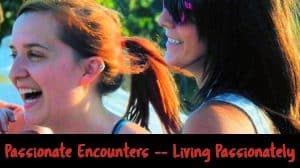
This is post 4 of 4 in the series “Intimacy as a Way Inside”
Passionate Encounters — Living Passionately — many people want to talk about, or define passion. Far better to live it as we encounter true being. Featuring ideas from my most popular book, This Endless Moment 2nd. edition

Psst! Hey!
** Want more great writing designed to help YOU to shift your behaviour?
** Want to learn how to find, build or deepen your principal relationship?
** Want to know more about Zen living and being?
Many moons ago, I got into an online discussion about passion.
There quickly developed two “camps”: one espousing the experience or expression of passion, and the other wishing to ‘define passion.’ Here’s what I wrote:
The penultimate Western (ideologically, not geographically) obsession seems to be with “meaning making.” I suspect this is a left-over from the ‘ego project’ — the socialization and ego boundary building that is the basis of infancy, childhood and adolescence — and its emphasis on objectification, naming, individuation and intellectualizing meanings.
An Eastern approach, on the other hand, might be described as “simply noticing.”
Now, I think that the ego project is only supposed to be one stop along the way of a life long “train trip” (to steal Ben & Jock’s train story from The New Manual for Life.) And what if the next step beyond the ego project is “letting go and simply noticing?”
To take this next step requires our willingness to “transcend and include” — we bring our egos with us, along with our need to make meaning. In other words, we build upon the previous step as opposed to getting stuck there.
I’m pretty good at meaning making, and yet it has never occurred to me to wonder what I “should” be “doing with,” nor “what is the meaning of” my passion. To ask, “Whatever will I do with my passion, should I ever allow myself to release any blocks I have to it?” seems to me designed to keep me firmly in my head, and as far away from feeling my passion as is possible.
Passion, from a Bodywork perspective, resides in the pelvic, second chakra region, which corresponds to the Lower Dan Tien (the storehouse for chi) in Chinese theory. A major block for passion is at the diaphragm level, which corresponds to third chakra, (self esteem — big surprise, eh?) and perhaps to kidneys.
Again, in the Chinese system, kidneys are both “the feet that propel us forward” and the locus of fear. My life often feels like I’ve got one foot on the accelerator, one foot on the brake. My sense is that I am blocking myself from total engagement with life, surely out of fear.
I’m trying to say that the free flow of passion is one piece, and the choice of expression, another. Thus, I concur with Ben Wong’s comment that:
Passion is the pressure of the soul to be expressed.”
One of the ways, I “free my passion” is through painting. Some years ago, I was staring at a photo I like. I became aware of an energy crawling up my spine, and began to imagine a painting. My head quickly dismissed this, as I “had no time.”
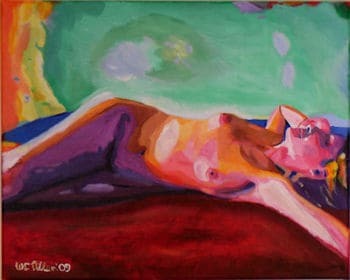 Never Quite Sure — painting by Wayne C. Allen
Never Quite Sure — painting by Wayne C. AllenI patted my little head, which was busy coming up with all kinds of reasons not to paint, went out into the garage, grabbed my easel and a canvas — and 7 hours later the painting was almost finished. First “real” painting (as opposed to “touching up” old paintings) I’d done in a decade. I finished it the next night.
To wrap this up, I’m suggesting that one goal of the ego project is to teach us to tighten up and behave. There is little tolerance for passion in our tribes. We learn socially acceptable releases — sports, sex, etc. — but are reluctant to really let go, for fear of “what happens next.”
Indeed, clients, upon feeling the chi and passion flow, (which is directly the result of the “letting go” of the tightness, accompanied by the release of emotions) will often exclaim, “This is terrific, but what do I do with it?”
My answer: “Be with it, and see what emerges.” Sometimes a poem. Sometimes a painting. Sometimes a dance. Elegant therapy. A warm embrace. A passionate encounter. Or a quiet moment as Amazing Grace plays and the sun sets.
>I’ve lost my desire to know about passion.
It seems enough to simply be in its flow.
The post Passionate Encounters — Living Passionately appeared first on The Pathless Path.
April 23, 2018
Passion’s Flow
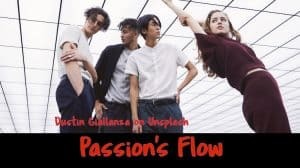
This is post 3 of 3 in the series “Intimacy as a Way Inside”
Passion’s Flow — passion for life is all about what we look at… being alive not as difficult as it seems. Featuring ideas from my most popular book, This Endless Moment 2nd. edition

Psst! Hey!
** Want more great writing designed to help YOU to shift your behaviour?
** Want to learn how to find, build or deepen your principal relationship?
** Want to know more about Zen living and being?
“Underneath all the wanting and grasping, underneath the need to understand is what we have called “the body of fear.” At the root of suffering is a small heart, frightened to be here, afraid to trust the river of change, to let go in this changing world.”
After the Ecstasy, the Laundry,
Jack Kornfield, p. 213
(This is an essential book! Mouse-over link to purchase!)
 Painting by Wayne C. Allen
Painting by Wayne C. Allen I remember an interesting moment with a friend of mine.
We were discussing a mutual friend, and she mentioned that the mutual friend was really concerned about something or other — was making herself sick over it –
that there was this big, deep problem. She asked me how I saw the situation.
I replied, “Yeah, I do remember her saying something about that, but I didn’t really listen, and I don’t much care.”
My friend, I think, had a moment of not really liking me. She was incensed at what she saw as my unfeeling and uncaring attitude.
I said, “And now you’re upsetting yourself over my reaction to a situation that’s not about you. I don’t care because the situation, while is seems critical, isn’t all that important. Knowing her, next week she’ll be miserable about something else.”
There’s an old joke about this new psychiatrist who rides up in the elevator each morning with an older, practiced psychiatrist. At night they ride down together. For months, the young guy notices that the older psychiatrist seems unruffled, whereas he feels like he’s been through the mill. Finally he speaks up, “How do you look so fresh at night having seen clients and heard all of their terrible tales?” The older psychiatrist says, “Who listens?”
OK, I’m being flip here. And yes, I do listen. I’m noted, in fact, for my memory. I’m not trying to be smart when I do this. I’m trying to point out the inconsistencies of life, due to time and change.
One of the more interesting life lessons is learning to swim in a sea of change. The Greek philosopher Heraclitus reminded us that you can never step into the same river twice. Many people fervently don’t want to hear this. Acceptance of this would require doing away with two things:
the belief that we can control the world by making it stay the same, and
the belief that we know anything at all.
Or, as it’s said — wisdom is being, not knowing.
Our topic — living life more passionately — is actually a walk into “not knowing.”
We all have things we wish we didn’t do; things we wish we did — and we want those behaviours to change — forever. But as we said last week, none of us can change our nature. What we can change, moment by moment, (if we choose to,) is what we do this time.
That was why I didn’t take my friend’s distress seriously.
I laugh a lot about my dramas, and I hope that others will laugh at theirs. My friend had a pattern of making every situation awful. That’s her baseline, her non-changeable self. What she misses or “forgets” is that all situations change.
Something happens, boom, it’s awful. Until the next awful thing comes along. Then she forgets the first one, and the new thing comes “front and centre.”
To her, it seems that she is forever trapped in a relentlessly awful life — and she had trained our mutual friend to buy into her belief.
By stepping back, we can see that there is a river of experience flowing by. Nothing is the same. Experience upon experience. And each experience is neutral. Until she grabs an experience and “awfulizes” it.
Now, the opposite of this would be to simply be with each experience as it emerges, and to choose what, if anything, to do with it.
I know people who endlessly resist change, resist not knowing. To do so, they universalize. “He always treats me …” She never want to … ” “Everyone thinks I’m …”
There people want me to buy into their belief that there is no choice. In truth, there is always choice. If we choose …
It’s not that nothing is happening and everything is the same. The question is, are we willing to notice the flow of experience?
Our lack of passion for life, our lack of passion in loving, is about our pre-judgement (prejudice) that nothing will ever change. As soon as we allow for change to be possible, voila, we notice that change is all over the place.
This sort of choiceful looking occurs all the time, if we will but open our eyes and pay attention. A friend wrote:
I was watching the sky tonight as I drove home and the beauty brought tears to my eyes. The clouds were at all different levels and the sun was setting…vibrant blue sky with big puffy and layered clouds of dark and light purple and pink and orange and…ahhhh, glorious indeed! I was also noticing my thoughts…ranging from scaring myself to creating immense peace and joy…this is real living…a slice of life as a dear soul once described to me. I felt like I was expanding into the sky. I don’t think I ever created that experience for myself before.
If you look. If you look. If you look.
The post Passion’s Flow appeared first on The Pathless Path.
April 16, 2018
Intimacy and Passion in Relationships
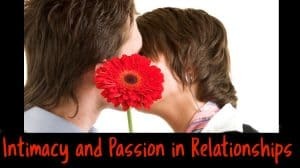
This is post 2 of 2 in the series “Intimacy as a Way Inside”
Intimacy and Passion in Relationships — keeping intimacy and passion alive… it’s not as difficult as it seems. Featuring ideas from my most popular book, This Endless Moment 2nd. edition

Psst! Hey!
** Want more great writing designed to help YOU to shift your behaviour?
** Want to learn how to find, build or deepen your principal relationship?
** Want to know more about Zen living and being?
How do we find intimacy and passion in our lives? For some, the search for either is fraught with peril — for others, it is a seemingly unattainable goal.
We begin this week’s explorations with the following e. e. cummings quote, (found in my present favourite book, After the Ecstasy, the Laundry ) —
“To be nobody but yourself in a world which is doing its best to make you everybody else, means to fight the hardest human battle ever and to never stop fighting.“
After the Ecstasy, the Laundry Jack Kornfield, p. 213
(This is an essential book! Mouse over title to purchase!)

OMG! Is that what I think it is???
I suspect that most people go through life singing a variation on, “One Day my Prince(ss) shall come.”
I once worked with a client whose husband had been married three times. One of her issues was that he had met another woman, and was heading off to spend a month with her. His mission was to see if she was, finally, the “right woman for him.”
My client was trying to figure out what her husband wanted.
Actually, what he wanted was clear. He told her what he wanted. He told her that, for all his life, he had been looking for the one woman who would both “turn him on” forever, and with whom building a relationship would be “easy.”
His marker that he was with the wrong woman? Any hint of disagreement, any reluctance on her part to instantaneously meet his needs.
Now, we can shake our heads here, but I don’t think this guy is all that much different from most people who haven’t gotten the “relationship thing” figured out. He’s just more honest about what’s going on in his head. He’s looking for unconditional love and unconditional sex. He’s confusing the first with relationship, and the second with living life passionately.
It’s clear that this guy, (and most folk in relationship,) are basically going, “If only my partner were more (intelligent, caring, sexy, demonstrative, etc.) and less (angry, weepy, sarcastic, etc.) then I would be happy.” They look outside of themselves for what’s wrong and then spend the entire relationship trying to fix the other person.

I, on the other hand, think that being in relationship is about providing witnessing and mirroring for our partner’s self-exploration. I am in relationship to learn about myself from the honest feedback of another — and vice-versa.
That’s e. e. cummings’s point.
I did actually see my client’s husband once — he later found another therapist. He told his wife that I asked too many questions — he want a therapist who would “just listen.”
Now, call me daft, but it seems to me silly to listen to someone describe, over and over, what they do to make themselves miserable, as if, by mere repetition, somehow they’ll change something.
My advice, as you would suspect, was for this guy to go inside of himself and examine his own belief system — to, in short, figure himself out. Something was out of whack for him, and it wasn’t his wife.
Her issue was why she chose to be in relationship with this guy.
So, what are the practicalities here?
Each and every one of us needs one or a few intimate friends,
This is such a lame example, but a couple of friends were visiting, and after a swim in the pool, I was lounging around, reading. Their dog had been in the pool. The dog wanders over and shakes, right next to me. I and my book got wet.
So I said a rude thing to the dog and sent her away. Five minutes later, the dog’s been back in the pool, and, you guessed it, came right back over and shook all over me. Dar was vacuuming the pool, and… and… she laughed!!
Well, I started sulking and went into the house. When Dar came in later, I said, “I’m really angry that you laughed at me.” She replied, “You might want to look at why you are angering yourself over this.” That’s mirroring.
Now, I decided to choose to be miserable for an hour or so, but I was fully aware of that choice, and announced that this was what I was going to do. In other words, I owned my own responsibility for my anger.
And I don’t care what your issue is — the question is never about your partner’s behaviour. It’s always about yours.
The contract Darbella and I have is to stay present with each other, to listen without attempting to change the other, and to be honest. That’s it. This approach to life means that both of us have chosen to explore the depths of who we are as individuals, and to share that exploration with each other, and also with a select few intimate friends.
Of course, I’ve written about all of this in my books, This Endless Moment 2nd. edition and
The. Best. Relationship. Ever.
The piece I want to reiterate is that, with self knowledge comes choice, not change. Change implies that, with time and practice, I can totally stop from being a certain way. This, I am afraid, is not possible.
As Jack Kornfield, in After the Ecstasy, the Laundry writes, wisdom is being able to be at one with ourselves.
“Like Ram Dass, who became a connoisseur of his own neuroses, we come to know ourselves as we truly are, but without indulgence or self pity. When we are truly aware of our feelings while not being bound by their energies, we can choose: no matter what the circumstances, we are free to follow our wisdom.” (pg.213)
And then there is passion.
From a Bodywork (see this page for more on the pelvis / lower back) perspective, there is a direct parallel between passion for life (located in the lower back) and erotic and sexual and sensual energy (located in the front pelvic/genital region.)
And it is so with all of our feelings. The depth of our loving, for example, is directly proportional to our ability to express our fear, which is love’s opposite. (Both are located at the heart chakra.) If our expression of passion is limited to a few minutes of sex, the depth of our passion for life is also going to be paper thin.
Opening to ecstasy, to passion, to the utter bliss of life is a spiritual discipline involving every cell of our bodies. In our rush to accumulate toys, bigger bank balances or more notches on the bed post, we miss the one thing all souls crave — depth. Indeed, most people who “count notches” of whatever they measure their “worth” with are lost in a shallowness that only partially disappears with the next conquest.
Instead, there is the depth of passion that comes from taking the time to go deeply into ourselves, feel our feelings and stay there, in a decidedly goal-less way. I find that Bodywork, as it allows us to release more and more of the tightness that comes from suppressing the things we hurt ourselves with, often opens into feelings that are both mind and body altering.
The post Intimacy and Passion in Relationships appeared first on The Pathless Path.
April 9, 2018
Intimacy as a Way Inside
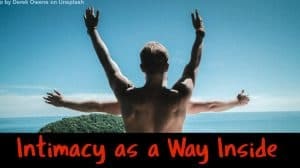
This is post 1 of 1 in the series “Intimacy as a Way Inside”
Intimacy as a Way Inside — a series of articles on intimacy, passion, and relating. Featuring ideas from my most popular book, This Endless Moment 2nd. edition

Psst! Hey!
** Want more great writing designed to help YOU to shift your behaviour?
** Want to learn how to find, build or deepen your principal relationship?
** Want to know more about Zen living and being?
“Enlightenment must be lived here and now through this very body or else it is not genuine. In this body and mind we find the cause of suffering and the end of suffering. For awakening to be an opening into freedom in this very life, the body must be its ground.”
After the Ecstasy, the Laundry, Jack Kornfield, p. 178
(This is an essential book!)
 Tied Up in Knots
Tied Up in KnotsSo, I really still amaze myself with the reluctance most Westerners have to being fully in their bodies — there to, in a sense — simply listen to the wisdom of their bodies.
I received a quite “classical” training in psychotherapy. I did academic courses for two years, and was also an Intern at a counselling centre for two years. I learned the techniques of counselling; I earned my spurs working with clients, using what I had learned (sometimes learned that very morning … ) with my head.
During training, I took a week-long course in “Bioenergetics,” a style of counselling developed by Alexander Lowen. It was built upon the work of Wilhelm Reich, the father of Bodywork.
We breathed, a lot, and we stretched, and tried various postures designed to get our bodies to shake. I can clearly remember doing the stuff under protest — I could make neither heads nor tails of the whole process.
No, I “knew” that the key to unlocking the knots of despair that my clients were feeling lay in helping them to understand what was going on between their ears. What was happening to them at the body — feeling level was the last thing on my mind. Literally and figuratively.
Some years later, in ’96, my body gave up on me. And for good reason.

Ready for the burnout
My life-approach was quite Western. I would work and work and work, then get the flu or something and have to stop. I’d go for acupuncture and herbs, get strong, and start working again.
In ’96, I’d been working extra long hours at my two churches (I was a Minister back then…) had incrementally increased my client load at my counselling centre, and had refused to “lie down” when the flu hit. I pushed, and pushed.
One morning I woke up in a black, dark fog, and my body would barely support me. I announced that evening that I was putting everything I could on hold. I loudly declared that “I need a break.” Indeed, I was close to the truth.
I was actually, physically, broken.
I went in to see my therapist and supervisor the next day. She did her magic (actually, I did my magic in her presence), and I recovered just enough of my strength to carry on.
She suggested that I go off to The Haven to do Phase 1 that July. I agreed, figuring that I could use the month to figure out (with my head) what my body was up to.
So, imagine my chagrin. The very first day at The Haven, the very first exercise, I was “invited” to lie down and breathe. To do Bioenergetic-like stretches. And, horrors, to receive Bodywork.
I just “knew” nothing would emerge from my body. Right.
Two thumbs, elegantly and deeply applied, and I was deep into my body, screaming, “What about me?” My body shifted, dragging my mind, kicking and screaming, with it. My mind was initially embarrassed about my body’s deep feelings, then resigned, then interested, then ecstatic — my body was finally being listened to.
My body and language shifted so much that I was “exited” from the Church within 6 weeks of returning from Phase. Best thing that ever happened — I suspect that a Minister who was in his body was pretty scary for a lot of people.
I went back to my therapist. I wanted to know what had happened. Instead, she provided me with the final piece of the puzzle I was creating for myself.
She suggested I spend 6 months saying, “I don’t know.” Hardest thing I ever did, and the most rewarding. I can cheerfully say that, 22 years later, “I still don’t know.” I am, however, excruciatingly aware of my thoughts, feelings, and energy.
With every breath I take, so to speak…
Westerners want explanations for everything. “Why do I feel this?” “What does this mean?”
I really don’t care — either about my dramas, or theirs. Many people I meet are initially taken aback by my disinterest in their “head” questions. They look baffled as I wonder aloud about what they are feeling — as I wonder about what needs to come “out” of their bodies.
I do this because I am curious about who is buried in there, under the surface, just dying to emerge.
And I wonder if they are courageous enough to enter fully into themselves, as opposed to stopping at their heads.
I wonder how freely they give themselves over to the bliss that is a part of our nature. I wonder about their willingness to feel the depths of their pain, so that they will also be able to feel the heights of their passion. What would it be like for them to enter the void — into the very Zen-y world that is alive and filled with no explanations… but teeming with feeling?
Will they let themselves breathe, and “go there?”
Ultimately, there is a choice to be made here. The choice is to abandon knowing anything for understanding everything. It’s letting go of the need to be right, replacing that with the need to simply be.
This new series of articles is an invitation into the depths of you. We’ll also be looking at ways of calming and appreciating the “little voices” nattering in our heads. We’ll look at being whole — feeling, reflecting, acting, changing as the world about us changes, as we ourselves change.
An interesting walk, for the courageous explorer. Welcome aboard.
The post Intimacy as a Way Inside appeared first on The Pathless Path.

